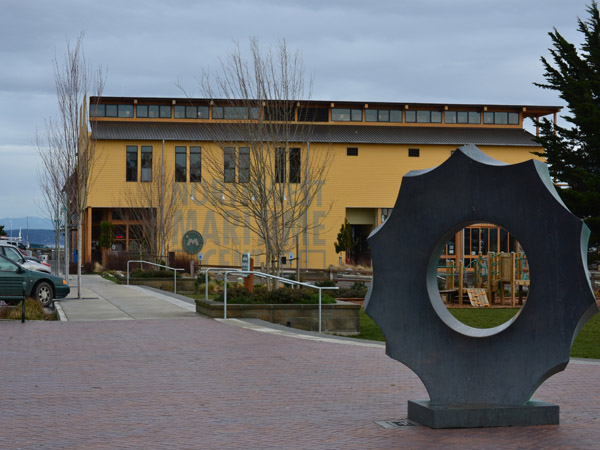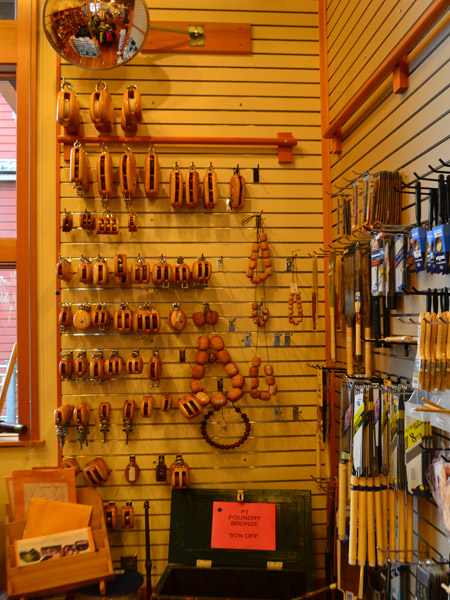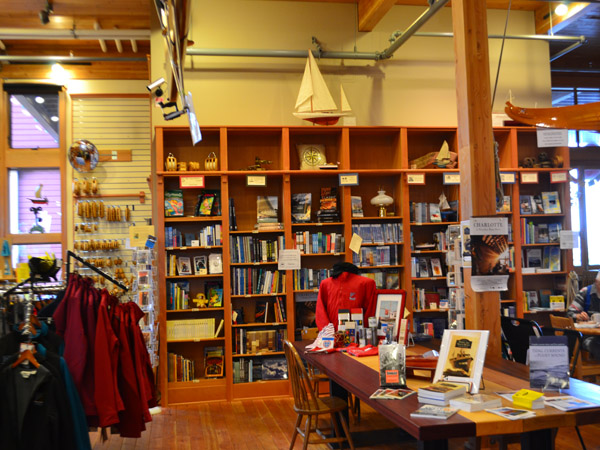A couple of weeks ago I showed you this boat under sail. It is a replica of one of the long boats that Captain George Vancouver’s crew used in the 1790s to explore our region. I saw it again, moored in Port Townsend, when I returned last week to look at the ancient anchor that may have come from this expedition. This is a more placid view of the boat which is used for Marine Education at the Northwest Maritime Center.
It’s quite a lovely boat with a very sweet stern.
Here’s a lesson in oars from DH, who pointed out these details to me: The big square part of the oars shown here is called the “loom.” It’s notable for its square form which is functional as a counter weight, making it easier to lift the blade of the oar out of the water during rowing. (Typical oars these days are more slender and tapered.) The leather on the oar relieves wear on it where it rides in the tholes, the slots you see above the sides (gunn’ls) of the boat. The tholes here are notable as this was the way oars were applied before the typical oar locks you see today. There. Now go out and impress someone with your extensive knowledge of oars!





